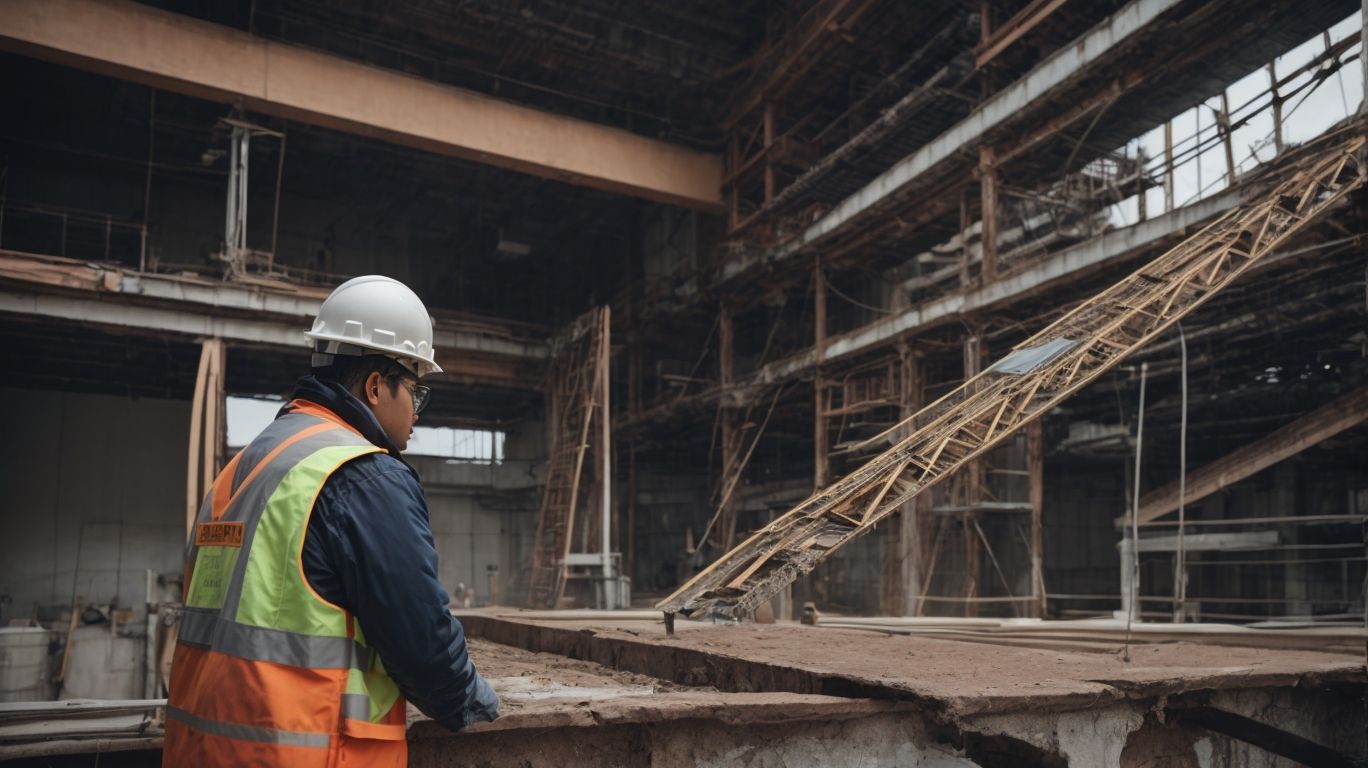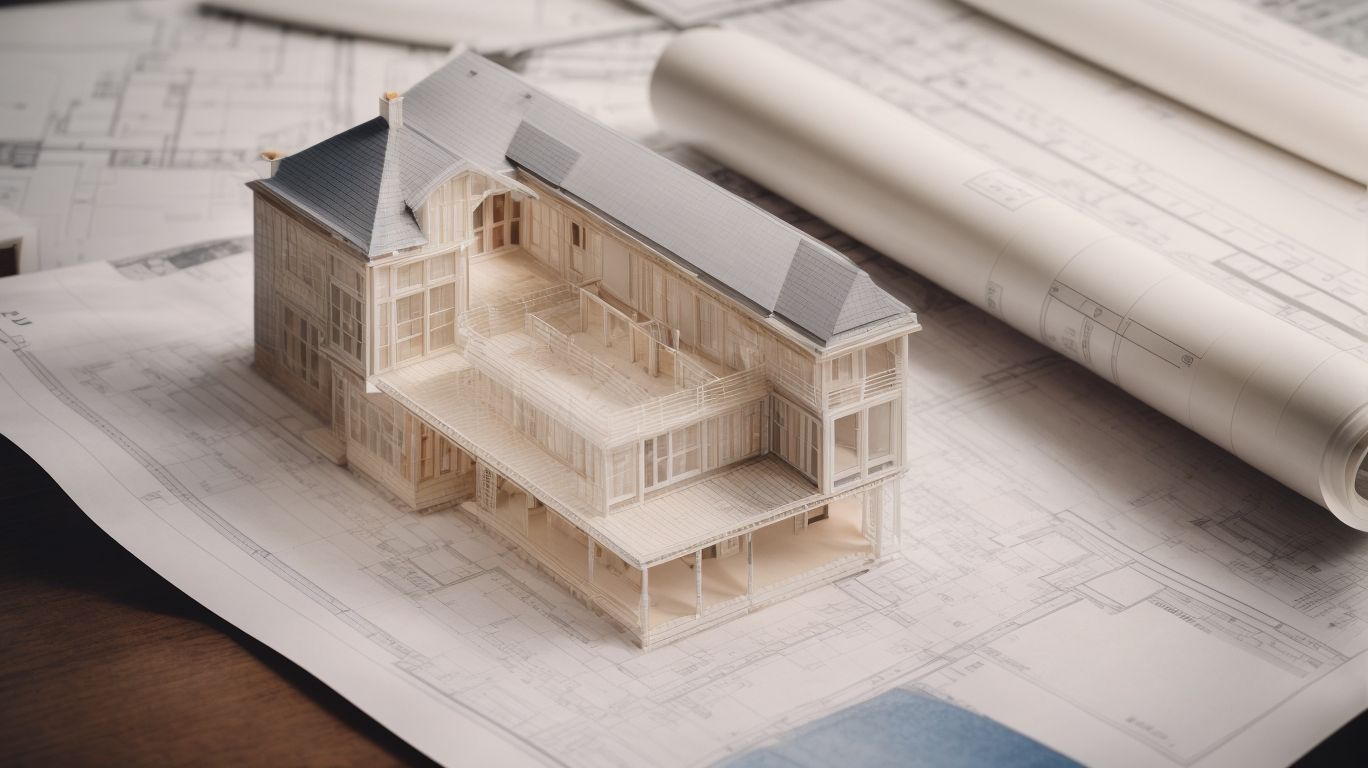
Structural Repair and Retrofitting for SF Buildings
San Francisco, known for its stunning architecture and historical buildings, is also located in an earthquake-prone area. This makes structural repairs and retrofitting crucial for ensuring the safety and stability of buildings in the city.
From identifying the signs that a building may need structural repair to understanding the techniques and costs involved, this article will delve into the importance of structural repair and retrofitting for San Francisco buildings. Whether it’s cracks in walls or the use of steel bracing, we will cover all the essential information you need to know.
What Is Structural Repair and Retrofitting?
Structural repair and retrofitting involve the process of enhancing the stability, safety, and resilience of buildings. This is particularly crucial for San Francisco buildings due to their seismic vulnerability and the need for seismic retrofit and strengthening.
In San Francisco, it is crucial for buildings to undergo seismic retrofit and strengthening. This is because the city is located near major fault lines, making it vulnerable to earthquakes. The purpose of retrofit construction is to minimize the potential damage caused by seismic events and ensure that buildings can withstand the impact, protecting the occupants inside.
By improving the structural performance and fortifying the existing building framework, the risk of collapse or severe damage during an earthquake can be significantly reduced. This enhances overall building safety and resilience. Through careful assessment and strategic retrofitting measures, San Francisco’s buildings can be safeguarded against seismic threats.
Why Are Structural Repairs and Retrofitting Necessary for SF Buildings?
Structural repairs and retrofitting are essential for San Francisco buildings due to the high seismic hazard in the region. This necessitates compliance with stringent building codes and the implementation of seismic retrofit and strengthening measures.
Enhancing the resilience of structures and ensuring the safety of occupants during seismic events requires crucial measures. Engineers and construction professionals can effectively mitigate potential risks by adhering to specific building codes that consider the seismic vulnerability of the region. Implementing seismic retrofit and strengthening techniques can significantly improve the performance of existing structures, reducing the likelihood of extensive damage and collapse. This ultimately contributes to a more resilient built environment.
It’s imperative for building owners and stakeholders to prioritize these initiatives to safeguard the community and infrastructure against seismic hazards.
Earthquake Prone Area
San Francisco is located in a highly earthquake-prone area, making its buildings susceptible to seismic hazards and necessitating compliance with the seismic retrofit ordinance to mitigate seismic vulnerability.
The city’s unique location on the Pacific Ring of Fire increases the risk of seismic activity, putting buildings at potential risk of structural damage and collapse. To address this vulnerability, the seismic retrofit ordinance outlines stringent regulations that require building owners to reinforce structures to withstand seismic events. These measures include strengthening foundations, retrofitting older buildings, and applying advanced engineering techniques to enhance building resilience. Compliance with these regulations is crucial to ensure the safety and structural integrity of San Francisco’s buildings in the face of potential seismic hazards.
Aging Buildings
Many buildings in San Francisco are aging structures, requiring renovation and retrofitting to enhance their seismic performance. This is particularly crucial for preserving the structural integrity of historic buildings.
As these buildings continue to age, they become more vulnerable to seismic events, posing a threat to the safety of occupants and the preservation of significant cultural heritage.
The process of building renovation and historic preservation is essential to ensure these structures can withstand the impact of potential earthquakes, while also maintaining their historical significance.
By incorporating modern technologies and construction practices, the resilience of these buildings can be greatly improved, safeguarding their legacy for future generations.
What Are the Signs That a Building Needs Structural Repair or Retrofitting?
Identifying signs indicating the need for structural repair or retrofitting involves conducting a comprehensive structural assessment. This should particularly focus on evaluating earthquake damage and ensuring building safety and stabilization.
This assessment should include a thorough examination of potential cracks in the walls, uneven floors, or doors and windows that do not function properly. Visible damage to the foundation or structural elements, such as beams or columns, could indicate the necessity for immediate repair or retrofitting.
It’s crucial to address these signs promptly to prevent further deterioration and ensure the safety and stability of the building, especially in seismic regions prone to earthquakes.
Cracks in Walls or Foundation
Cracks in walls or foundation can signify the need for structural repair, particularly requiring focused attention on foundation repair and seismic retrofit to mitigate potential risks associated with seismic hazards.
These cracks may indicate underlying structural issues that, if left unaddressed, could lead to further damage and compromise the stability of the building.
Implementing seismic retrofit techniques alongside targeted foundation repair can bolster the structure’s ability to withstand potential seismic forces, reducing the likelihood of extensive damage during an earthquake event.
It’s crucial to consult with experienced professionals in foundation repair and structural engineering to ensure proper assessment and implementation of appropriate seismic strengthening measures for long-term safety and resilience.
Uneven Floors or Sloping Roofs
The presence of uneven floors or sloping roofs necessitates a thorough structural assessment to ensure building safety, often requiring retrofit construction and ongoing building maintenance to address potential structural issues.
Structural issues in buildings can pose safety concerns for occupants and cause long-term damage if not addressed. Proactive retrofit construction, following building maintenance and retrofit guidelines, is crucial to mitigate risks and maintain structural integrity.
Building owners should conduct comprehensive assessments to identify necessary modifications or reinforcements needed to ensure the stability and longevity of the structure. Regular inspections and timely interventions are crucial to prioritize structural safety and prevent potential risks from escalating.
Leaning or Bulging Walls
The presence of leaning or bulging walls indicates seismic vulnerability, requiring immediate attention to enhance seismic performance through targeted building strengthening and the implementation of seismic retrofit measures.
This vulnerability can pose a significant risk in the event of an earthquake, potentially leading to structural instability and compromising the safety of occupants.
To mitigate these risks, it is essential to conduct thorough structural assessments, identify weak points, and employ effective retrofitting techniques, such as adding shear walls, bracing systems, or base isolators.
Proactive measures like these not only enhance the resilience of buildings but also contribute to the overall safety and sustainability of communities in seismic-prone areas.
What Are the Steps Involved in Structural Repair and Retrofitting?
The process of structural repair and retrofitting encompasses essential steps, beginning with thorough inspection and assessment, involvement of structural engineers, identification of seismic retrofit solutions, and obtaining necessary permits for the planned work.
This detailed process is vital to ensure the structural integrity of the building and its ability to withstand potential seismic activity. Following a careful inspection, structural engineers play a critical role in analyzing the findings and designing appropriate retrofit solutions.
Once the retrofit plan is established, obtaining the necessary permits from local authorities becomes crucial before proceeding with the actual seismic retrofit process. These steps are imperative to reinforce the building’s structure and ensure the safety of its occupants in the event of an earthquake.
Inspection and Assessment
The initial phase of structural repair and retrofitting involves conducting a comprehensive inspection and assessment, focusing on evaluating seismic hazard and performing a seismic risk assessment to comply with the seismic retrofit ordinance.
This critical process entails thorough examination of the building’s structural integrity, identifying potential vulnerabilities to seismic activity, and assessing the level of risk posed to the occupants and surrounding areas.
A robust seismic risk assessment not only ensures compliance with regulatory standards but also plays a crucial role in safeguarding lives and property. By carefully evaluating the seismic hazard and assessing the vulnerability of buildings, engineers and stakeholders can make informed decisions to implement effective retrofitting measures, thereby enhancing overall building safety and resilience to seismic events.
Design and Planning
The design and planning phase of structural repair and retrofitting involves the identification and development of seismic retrofit solutions, adhering to established retrofitting standards, and integrating principles of seismic engineering to enhance building resilience.
This crucial phase lays the foundation for ensuring the structural strength and stability of buildings in the face of potential seismic events. By implementing seismic retrofit solutions, buildings can be equipped to withstand the forces exerted during earthquakes, safeguarding the lives of occupants and minimizing damage to the infrastructure.
Adherence to retrofitting standards is paramount to guaranteeing the effectiveness and reliability of these solutions. Integrating principles of seismic engineering ensures that the retrofitting process aligns with the best practices and innovations in the field, contributing to the overall resilience of the structure.
Obtaining Permits
Securing necessary permits for structural repair and retrofitting involves compliance with the seismic retrofit ordinance, adherence to building codes, and consideration of historic preservation aspects, particularly relevant for seismic upgrade projects.
This process requires thorough assessment of the existing structure’s condition and a detailed plan outlining the proposed upgrades.
It is crucial to ensure that the retrofitting work complies with all relevant regulations to guarantee the safety and stability of the building in the event of seismic activity. For structures with historical significance, careful consideration must be given to preserving the architectural integrity while implementing necessary seismic upgrades, striking a balance between safety and preservation.
Execution of Repairs and Retrofitting
The execution phase involves implementing targeted retrofit construction, incorporating seismic retrofit design principles, and focusing on essential tasks such as foundation reinforcement and structural reinforcement to enhance building stability.
This phase typically involves the use of specialized construction techniques, such as adding steel bracing or shear walls to strengthen the building’s structure against seismic forces.
In addition to addressing the structural framework, measures like installing base isolators or dampers may be employed to mitigate the impact of seismic events.
Emphasizing the integration of these seismic retrofit measures ensures that the building is well-prepared to withstand potential seismic activity and protect its occupants.
What Are the Different Techniques Used in Structural Repair and Retrofitting?
Structural repair and retrofitting involve the utilization of various techniques, including steel bracing, carbon fiber reinforcement, foundation underpinning, and other retrofitting techniques to enhance building stability and resilience.
Improving the seismic performance of existing structures requires indispensable techniques. One such technique is steel bracing, which provides enhanced lateral support against sideways forces during earthquakes. Another option is carbon fiber reinforcement, offering a lightweight and high-strength solution for reinforcing structural elements. Additionally, foundation underpinning can address issues like subsidence or inadequate bearing capacity, strengthening and stabilizing existing foundations. These approaches are crucial for ensuring the safety and longevity of buildings in the face of seismic activity.
Steel Bracing
Steel bracing is a pivotal technique in structural reinforcement, contributing to seismic retrofit solutions, building strengthening, and the overall enhancement of seismic performance for buildings.
The significance of steel bracing lies in its ability to effectively distribute and dissipate seismic forces. This reduces the vulnerability of structures to seismic events, making it a preferred choice for engineers and architects in seismic-prone regions.
In addition, steel bracing offers flexibility in design and can be seamlessly integrated into existing structures during retrofit projects. This not only ensures enhanced structural integrity but also provides cost-effective solutions for improving the seismic performance of buildings.
Carbon Fiber Reinforcement
Carbon fiber reinforcement is an advanced method employed in retrofit construction, integrating seismic retrofit design principles, and contributing to the improvement of building resilience while meeting established retrofitting standards.
This innovative approach utilizes the strength and durability of carbon fiber composites to enhance the structural integrity of existing buildings, particularly in seismic-prone regions.
By strategically applying carbon fiber reinforced polymers (CFRP) to key structural elements, such as beams, columns, and walls, it significantly enhances their load-bearing capacity and ductility, thereby fortifying the building against potential seismic forces.
The lightweight nature of carbon fibers minimizes the added weight on the existing structure, making it an ideal choice for retrofit construction projects that prioritize both strength and flexibility.
Foundation Underpinning
Foundation underpinning is a critical technique for addressing foundation repair, informed by seismic risk assessment, and necessitating ongoing building maintenance to uphold retrofitting standards and ensure structural stability.
Foundation maintenance is crucial for strengthening existing structures, particularly in regions prone to seismic activity. Regular upkeep is necessary to address any weakening over time and meet retrofitting standards. This involves frequent inspections, repairs, and modifications to enhance the foundation’s structural integrity and resilience.
By incorporating seismic risk assessment into foundation underpinning plans, homeowners and builders can proactively mitigate potential hazards and protect their properties from the impact of earthquakes. This comprehensive approach to foundation maintenance and repair promotes long-term structural stability and safety.
Shear Walls
Shear walls play a crucial role in seismic retrofit projects, aligning with building codes and retrofitting standards to address seismic vulnerability and enhance the structural integrity of buildings.
Their ability to resist lateral forces significantly reduces the building’s vulnerability to seismic events, ensuring enhanced safety for occupants.
By strategically placing shear walls in the structural framework, the building’s overall stiffness and lateral load resistance are significantly improved, meeting the stringent requirements set by seismic retrofit solutions.
The installation of shear walls can greatly contribute to the overall structural performance of a building, providing a cost-effective and reliable method to mitigate seismic risk.
How Much Does Structural Repair and Retrofitting Cost?
The cost of structural repair and retrofitting is influenced by various factors, including seismic retrofit requirements, compliance with building codes and retrofitting standards, and considerations for seismic upgrade projects.
Seismic retrofit requirements play a crucial role in determining the cost of structural repair and retrofitting. They often entail specialized materials and construction methods to enhance a building’s seismic performance.
Compliance with building codes is essential to ensure that the retrofitting meets the regulatory standards, which can impact the overall cost. Considerations for seismic upgrade projects further add to the expenses, encompassing aspects such as site-specific assessments, engineering designs, and retrofitting implementation.
These factors collectively contribute to the comprehensive cost evaluation of structural repair and retrofitting projects.




No Comments